Some of the links in this post may be affiliate links.
Have you been frustrated with your hibiscus and wondering why it’s not blooming for you? In this post I will lay out everything that you need to know to care for your hibiscus so that you can enjoy a profusion of blooms. I’ve been growing hibiscus for years, and I will share all the practical tips on how to get hibiscus to bloom.
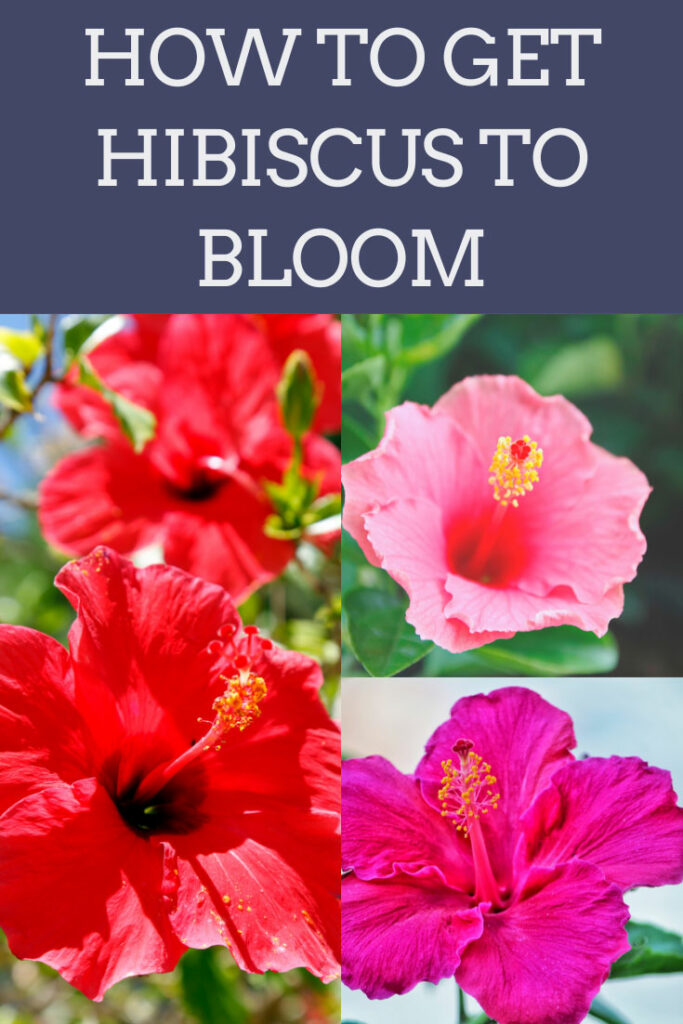
Please note that this post is for tropical hibiscus (Hibiscus rosa-sinensis) and NOT the hardy hibiscus that are perennials and hardy even in cold-winter regions.
Table of Contents
HOW TO GET HIBISCUS TO BLOOM
The two most important factors in getting your hibiscus to bloom are simply:
- Providing enough sun
- Making sure you have a good fertilizing routine
And you do need to do BOTH of these things for best results.
Let me elaborate on these two main factors, and I’ll also supply 5 other “supporting factors” that are necessary for a healthy hibiscus so that your plant will be in the best shape possible, and full of blooms!
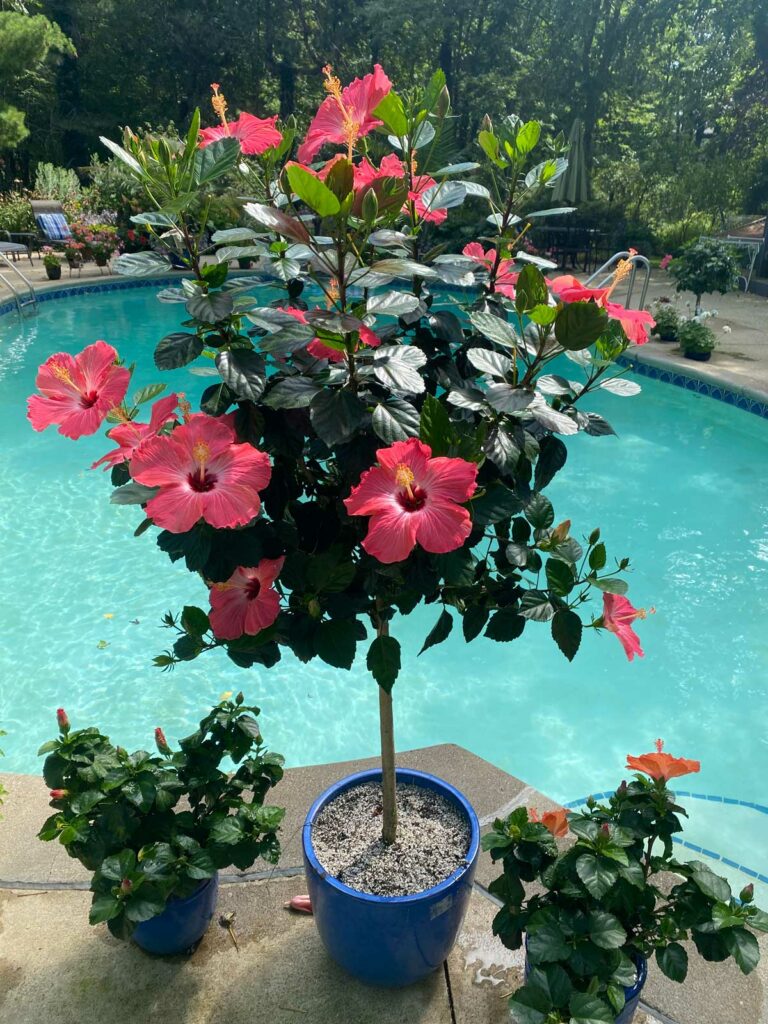
1. PROVIDE A LOT OF SUN
Here are some really important tips on managing light for your potted hibiscus. Whether you are growing your plant indoors, outdoors, or both, I’ll share some important tips to help you.
Hibiscus are sun loving plants and without enough sun, they will struggle to bloom. If you have a plant that looks healthy, with green leaves but still isn’t blooming, try increasing the amount of sun that it gets.
POTTED HIBISCUS INDOORS
If you are growing your hibiscus year-round indoors, give it the absolute sunniest window that you can.
Keep in mind that light and direct sun indoors is much weaker than any direct sun outdoors, so you must give your plant abundant sun in order to have the most flowers.
If you live in the northern hemisphere, an unobstructed southern facing window will be best. And place your plant immediately in front of the window and not several feet back.
If you live in the southern hemisphere, the situation is reversed so place your plant in front of a northern facing window.
At a bare minimum, regardless where you live, unobstructed eastern or western windows will also work. If you have windows with no direct sun at all, this is not acceptable for flowering.
The more direct sun indoors, the better. Hibiscus that do not receive enough light will not only fail to bloom, but the plants will also be less sturdy and leggy.
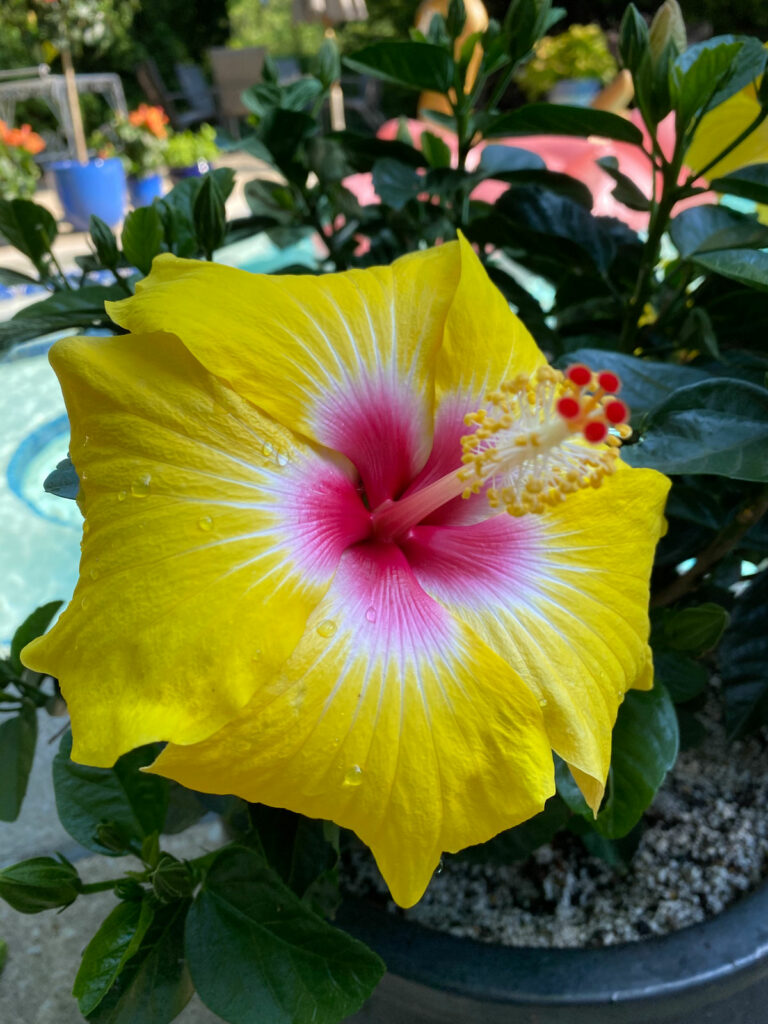
POTTED HIBISCUS OUTDOORS
Many people will move their potted hibiscus plants indoors during cold weather and then move them back outdoors when it gets warmer again outside.
Here is a word of caution though. If you are moving a hibiscus from indoors to outdoors, you need to gradually acclimate it to higher light otherwise it will burn.
Why is this necessary? Direct sun outdoors is much more intense than direct sun indoors, so you have to acclimate them slowly when moving from indoors to outdoors.
Move your hibiscus into full shade outdoors for a few days, and then gradually increase direct sun exposure a little at a time.
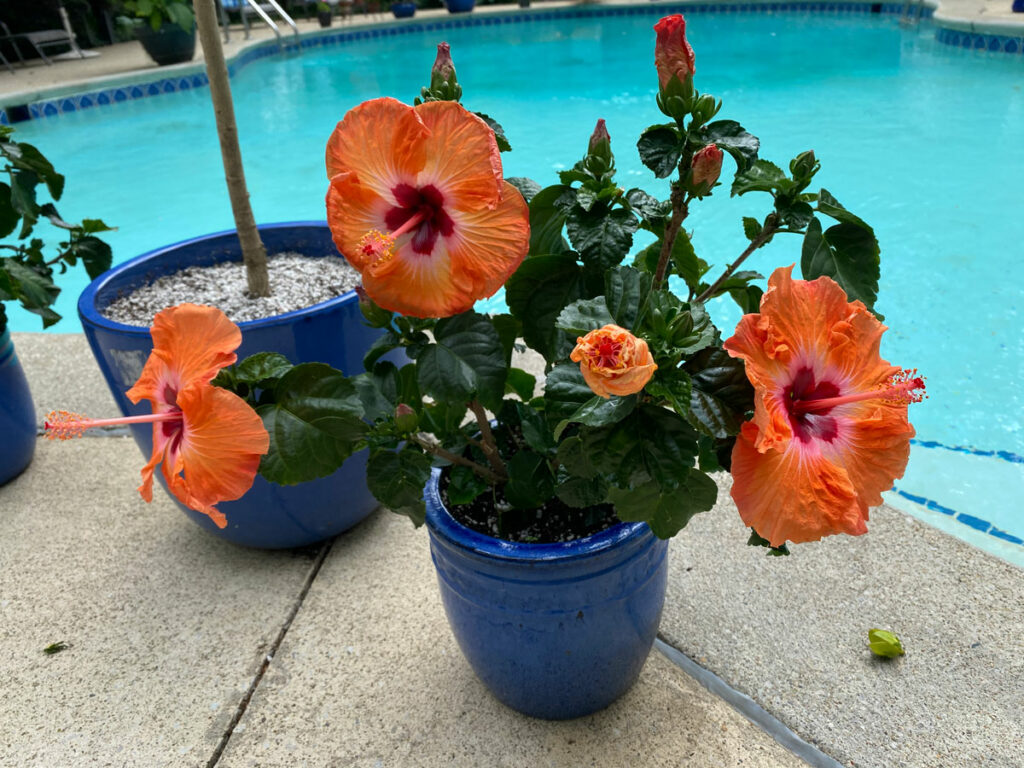
After it has been in full shade for a few days, start with an hour of early morning sun. You can then increase the exposure maybe by a half hour or an additional hour each day until your plant is fully hardened off.
If you do it too quickly, the leaves will scorch and appear like they are bleached out. This is exactly what you want to avoid.
This type of acclimation to higher light is important even for sun-loving plants like hibiscus. Don’t make the mistake of thinking that your plant doesn’t like sun just because you failed to acclimate it properly and it burned. It was just not acclimated to higher light properly.
If you live in a climate that has really hot, harsh summers, you can get away with less direct sun. And in fact, it may be necessary to avoid stress on the plant. Try and situate your plant in a location that gets morning sun which is gentler than mid-day and afternoon sun.
In a climate like mine in Ohio, I place them in the sunniest spot in my garden. You will know if your plant is happy!
2. MAKE SURE YOU ARE FERTILIZING ABUNDANTLY
It’s not all just about the light though. Fertilization is extremely important in ensuring that your hibiscus plant blooms to its maximum potential.
You can use a lot of different fertilizers, particularly ones that are high in Potassium. And there are certain types of fertilizers that you should avoid.
Let me describe my own fertilization regimen that has worked well for me.
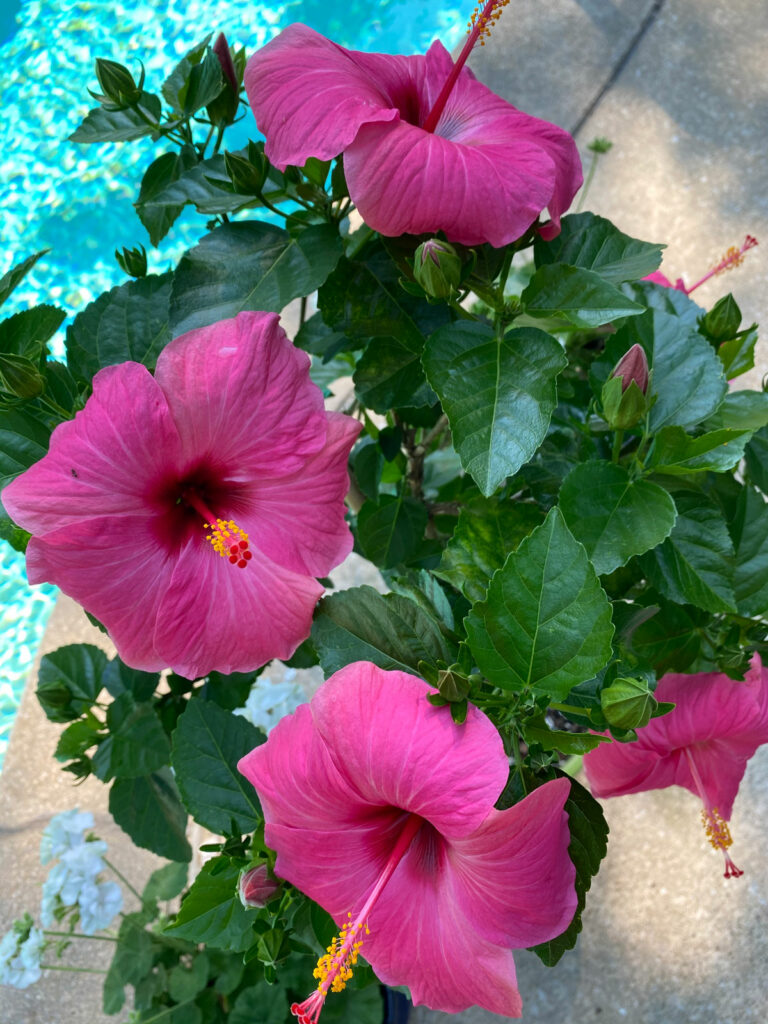
I like to use a combination of time release fertilizer as well as regular, weekly fertilization with water soluble fertilizers throughout Spring, Summer and Early Fall.
For the time release fertilizer, I use Osmocote Plus and I apply it in late Spring. After about a month, I’ll make another application.
In addition, I will then fertilize weekly with a water soluble fertilizer. I typically use Neptune’s Harvest Fish & Seaweed Fertilizer one week, and then Miracle Gro Tomato Fertilizer, which has a lot of Potassium, the following week. Then I keep repeating this cycle.
Of course you can use many other fertilizers, but this routine has worked well for me.
Hidden Valley Hibiscus recommends avoiding “bloom booster” type fertilizers that have extremely high Phosphorus levels as this can be damaging to hibiscus over time.
When looking at a fertilizer, it should have 3 numbers and this is called an NPK ratio. For example, a bloom booster fertilizer may look something like this: 10-30-10 or 10-50-10. The middle number would be Phosphorus. First first number is Nitrogen and the last number is Potassium.
If you have your hibiscus indoors during wintertime and your have dark winters and short days and your plant is not growing at all, refrain from fertilizing until days start to get longer and your plant is visibly growing.
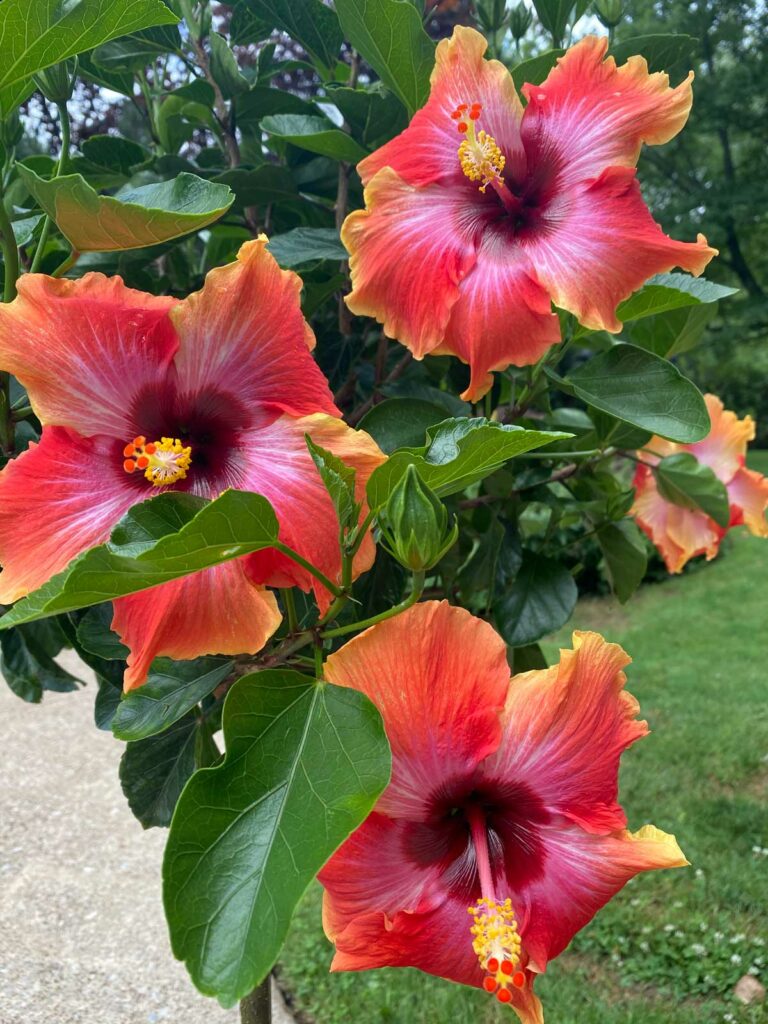
OTHER REASONS WHY YOUR HIBISCUS MAY NOT BE BLOOMING
Although light and fertilization are critically important, here are some other tips on how to get hibiscus to bloom.
If you have had issues with poor blooming (or general poor health), you may have one or more of the following.
3. Improper soil moisture
Hibiscus do not like to dry out completely (or stay wet for too long) so try and avoid this at all cost. I like to water mine after the top couple inches of potting mix have dried out, and then will give it a thorough soaking.
Don’t water on a schedule, and instead, feel your potting mix to determine if it needs water. Refrain from using soil moisture meters as they are junky and not reliable.
A well drained potting mix, as well as drainage holes in the pot, are essential. Mixing in some coarse sand or perlite into your potting mix will do the trick.
4. Using a fertilizer too high in nitrogen
If you’re using a very high Nitrogen fertilizer (this is the first number in the NPK ratio on any fertilizer label), this will encourage a lot of foliage growth at the expense of flower buds.
I would not recommend using the standard All Purpose Miracle Gro fertilizer as it contains too much Nitrogen. The NPK is 24-8-16.
5. Using a pot that is too large
Hibiscus and many other flowering plants will bloom best in a pot if it is at least somewhat root bound. If you plant a hibiscus in an oversized pot and there is a lot of excess potting mix, it may take a while before your hibiscus starts to bloom well.
6. It’s too cold
Hibiscus love to be warm, and you should avoid temperatures below 45°F (7°C). Try and maintain temperatures ideally from 60-85°F (16-29°C).
7. Pest problems
There are a number of pests that can affect hibiscus buds and flowers that can be problematic, including thrips, Japanese beetles, and more.
For more information on hibiscus problems, check out my post: Hibiscus Dying or Struggling? 7 Ways to Revive Your Plant.
Lastly, if you’re looking to save your hibiscus plants indoors over the winter, check out my blog post where I detail my process for overwintering hibiscus.
BONUS TIP: PRUNING
Did you know that hibiscus plants bloom on new growth? When you prune your plant, each pruned stem will often produce two new stems, and this means more opportunities for flowering!
Here is one of my hibiscus plants in my greenhouse before pruning.
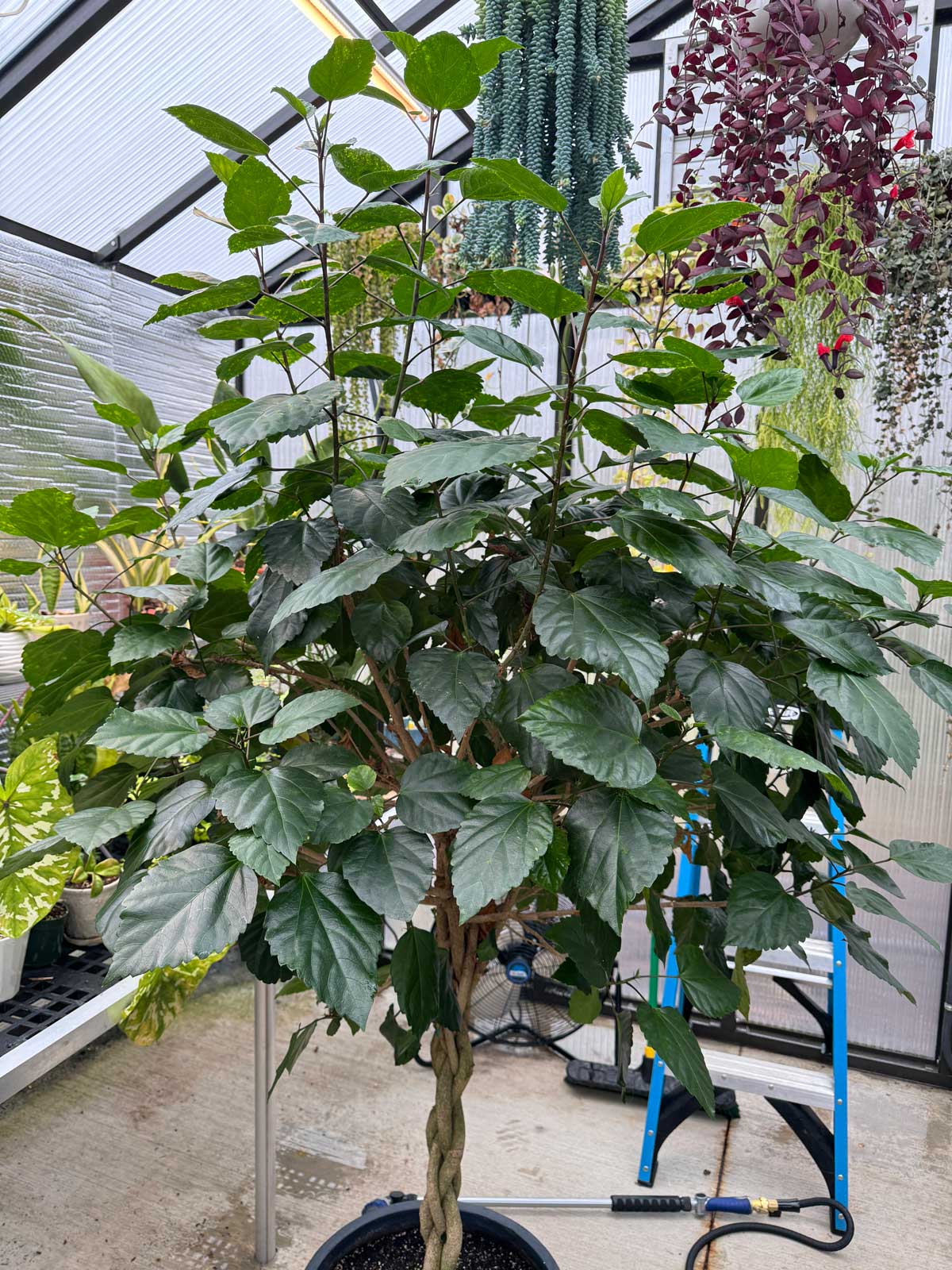
And here it is after pruning. I trimmed each branch back by about 1/3 to 1/2. As you prune, stand back a bit and you will be able to see visually if your plant looks balanced.
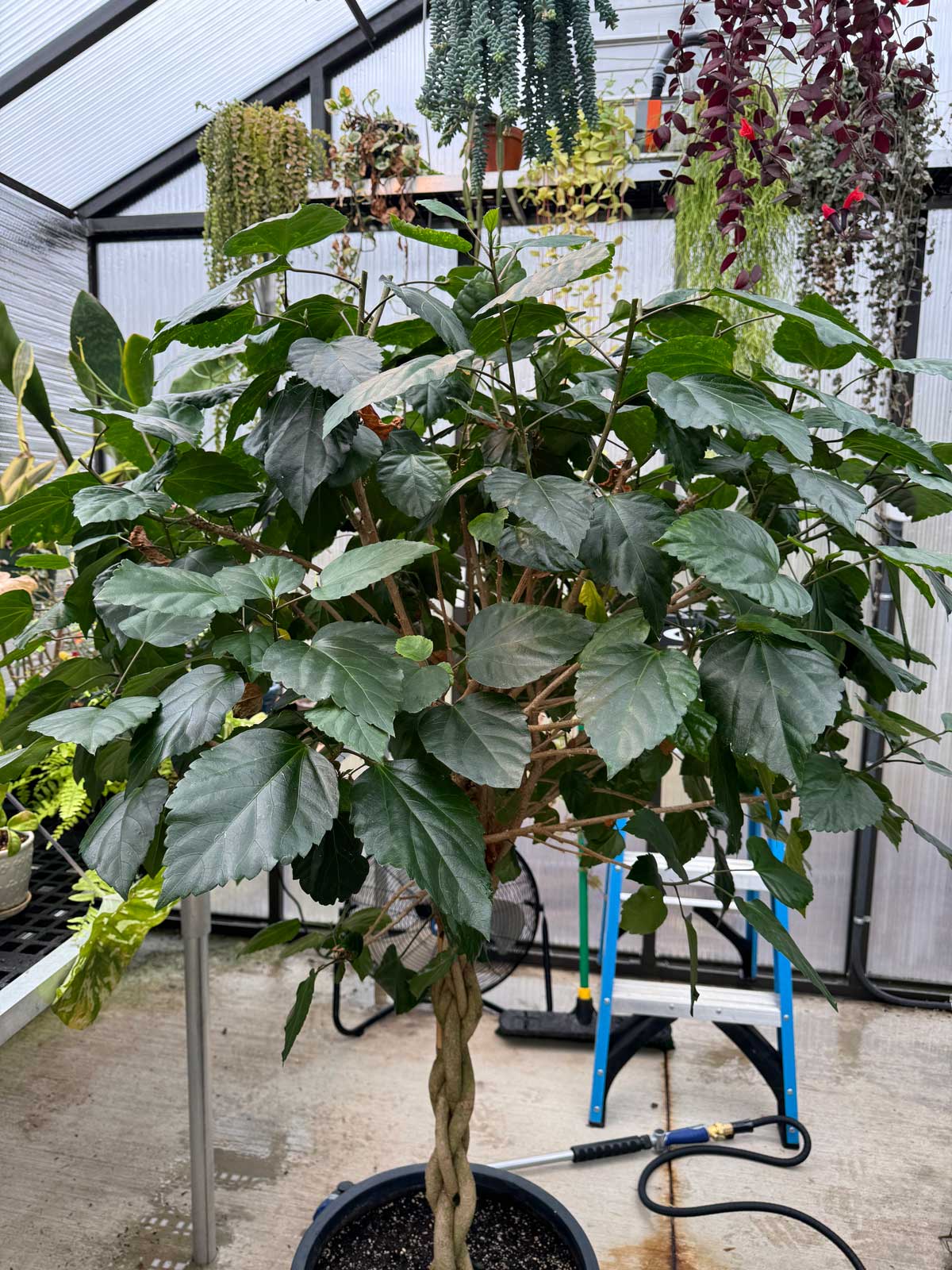
And here, you can see new flower buds at the tip of a newly grown branch after pruning.
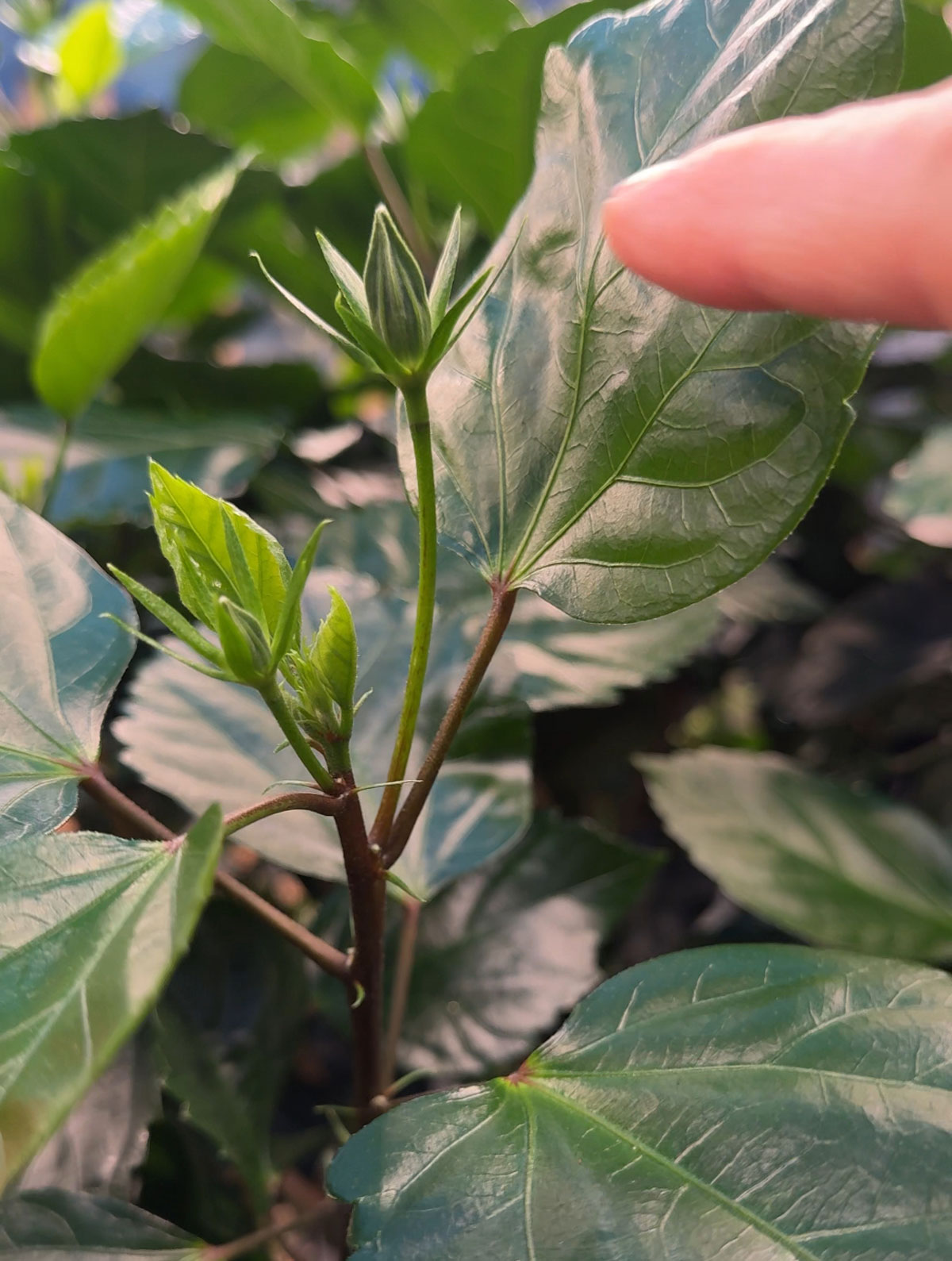
Don’t be afraid of pruning! I like to prune in late winter to early spring so that by the time my weather is warm enough to put the plants back outdoors, they will be loaded with blossoms!
I hope you’ve enjoyed this post on how to get hibiscus to bloom! You may also enjoy my article on poolside plants. I always keep some potted hibiscus by our pool during the summer, but there are so many other fun plants to grow.
Do you have any hibiscus? Comment below. I’d love to hear!

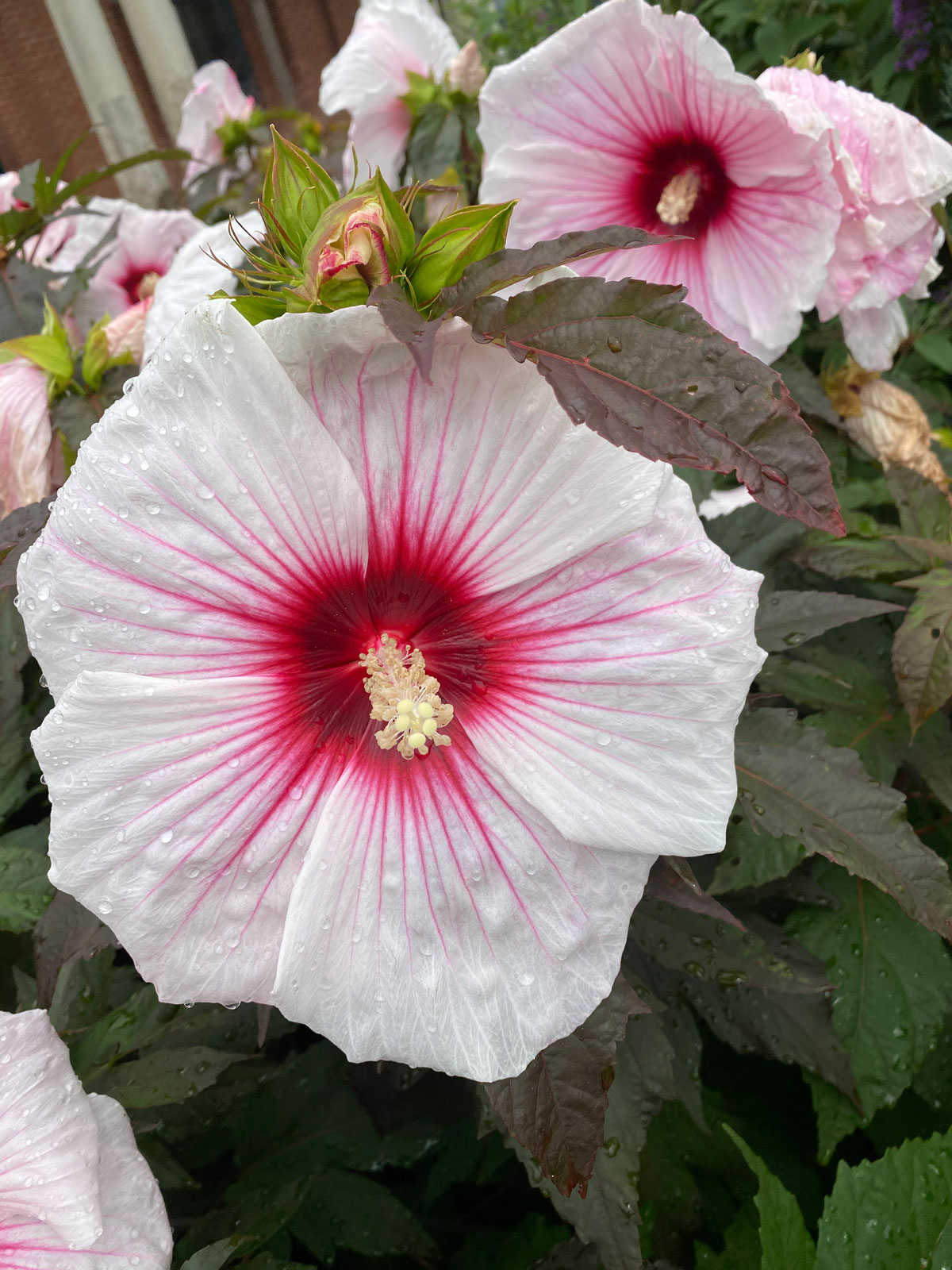
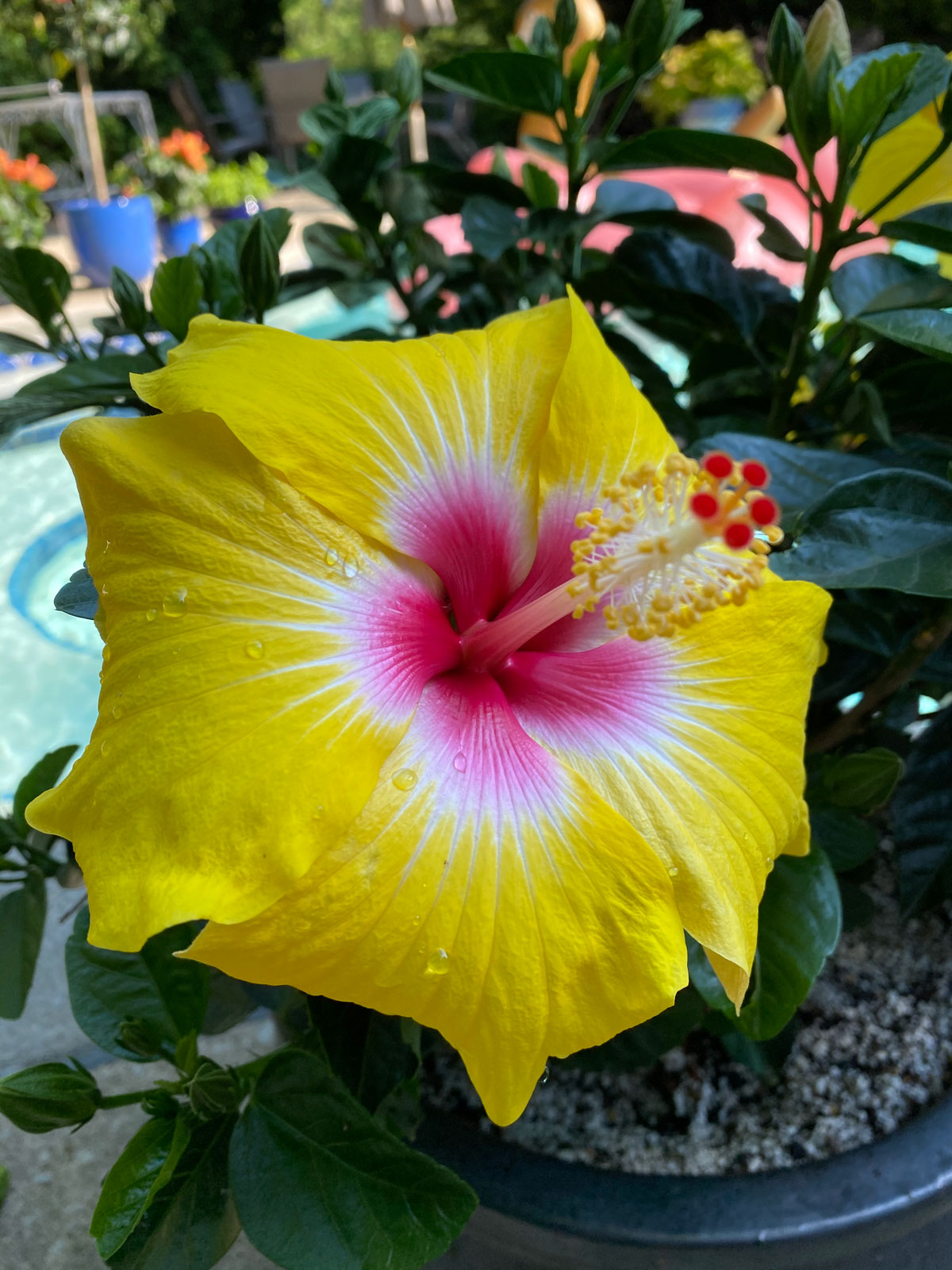
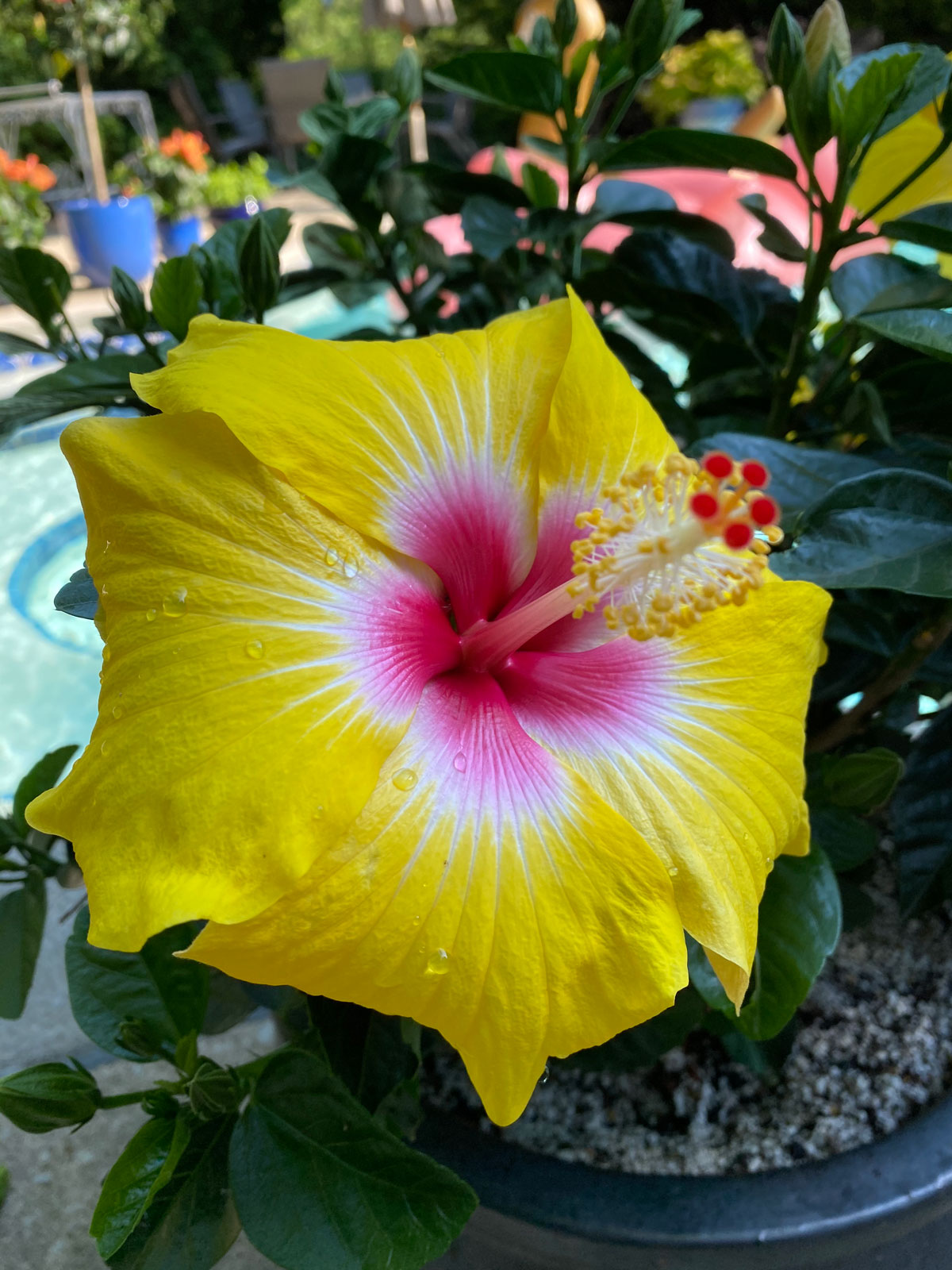
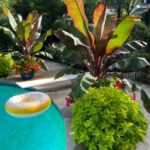

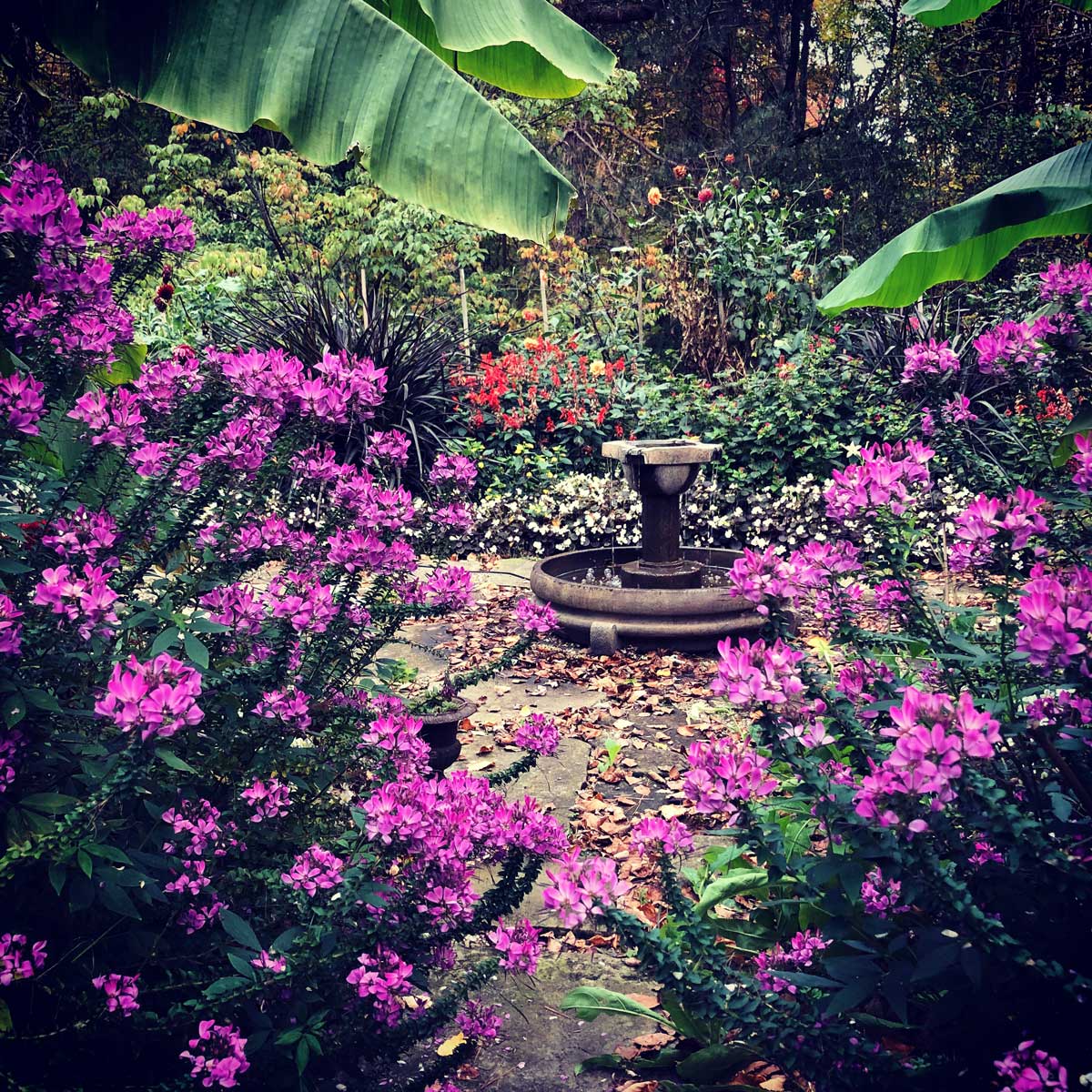
Teresa
Sunday 8th of June 2025
Hi, I bought my Hi is us about a month ago and the blooms were beautiful! Now it’s not blooming, I think I shouldn’t have used miracle grow in it, how do I fix this? Ty
Raffaele Di Lallo
Monday 9th of June 2025
Just care for it like normal and give it plenty of sun and water. It will keep blooming. Sometimes they have a lapse, but it should get going again soon.
DR M SATYAJIT
Thursday 23rd of March 2023
I don't want to use chemical Fertilizer,is there or are there natural stuff like eggshells or tea leaves that I can use instead? What about animal manure like Goat or cowdung?
Raffaele
Friday 24th of March 2023
I wouldn't recommend manure indoors...and depending on where you live, you can search for an organic fertilizer meant to be used indoors. I like fish emulsion but that will smell indoors, so I only use it for outdoor plants.
Helena Felicien
Tuesday 5th of July 2022
From the time I bought my hibiscus plant it has given me 2flowers but the plant remains very short it does not grow tall and do not look healthy I am sad because it should be growing tall with lots of flowers which I love what should I do what can I do to help my plant
Raffaele
Tuesday 5th of July 2022
Hi Helena! Are you doing anything differently from the care that I describe in the post? I can't really help without more details.